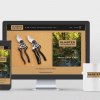A website scope document is a backbone for your digital project- whether it be content, design or development. It’s where all of your ideas and thoughts are collated in one place so the agency or team members understand what was requested by whom when and how. It also acts as a checklist for your project, including deliverables and deadlines.
What is a Website Development Scope of Work?
Introduction
A Website Development Scope of Work is a document that outlines the goals, objectives, and target audience for a website development project. It is important to research the project before starting so that there are no surprises during development. A Website Development Scope of Work should include everything from designing the website to setting up the servers. The scope of work should be tailored to the specific needs of the client.
Scope of Work
A website development scope of work is a detailed plan for the project from start to finish. Scope creep is when your project goes beyond the original plan. A scope of work protects you from scope creep and helps keep the project on track.
A website development scope of work should include all the necessary details to complete a website project. The scope should be specific and detailed, including the type of website, target audience, and budget.
Objectives
Project objectives help to define the desired outcome of a website development project. Objectives can be written in terms of features, goals, or outcomes. They should be specific and achievable in order to help guide the development process. Having clear objectives helps to ensure that the final product meets the needs of the client or organisation.
Deliverables
A website development scope of work should include a list of deliverables that will help the client understand project progress. This may include regular check-ins, progress reports, and prototypes or mockups of the site. It’s important to get a clear understanding of the client’s needs and preferences before starting the project, so that you can ensure that they are happy with the final product.
Schedule
Your website development scope of work should always include a schedule. This will help ensure that expectations are clear and that there are no future issues. Your schedule can be created using a variety of tools, such as google docs or a project management tool.
Payment Schedule
A Website Development Scope of Work should include the type of payment, client, and size of the project.
There are three types of payments for website development projects: retainer, project-based, or hourly. The type of payment depends on the type of client, size of project, and how the freelancer prefers to work.
A retainer is a set amount of money that a client pays upfront for a freelancer to complete a project over a period of time. This type of payment is common for long-term projects or when working with a new client.
A project-based payment is when a freelancer charges an agreed-upon amount for the entire project, regardless of how long it takes to complete. This type of payment is common for small projects with known scope and timeline.
An hourly rate is when a freelancer charges an agreed-upon rate per hour worked on the project. This type of payment is common for large projects with unknown scope or timeline.
Acceptance Criteria
The acceptance criteria for a website development scope of work should include the client’s preferences and performance requirements. Essential conditions should also be included in the scope of work so that the project can be completed according to the client’s expectations.
Emediacy is a web development and marketing agency that designs websites to get more traffic, engagement, and conversions. Emediacy will design a website that is tailored to your company’s unique requirements and preferences.
Through web development, paid advertising, and advanced SEO strategies, Emediacy has helped businesses in generating leads, increase conversions, and raise brand awareness. To know how Emediacy can help to grow your business exponentially, schedule a consult today.
What to Include in the Website Development Scope of Work?
In order to create an effective website development scope of work, you need to include certain elements. These elements include a detailed project timeline, functional specification, design specification, budget, project plan, client profile, contractual agreement, quality assurance procedures, site launch plan, post-launch plan and support plan. All of these elements are necessary in order for the website development project to be successful.
How to Write a Website Development Scope of Work?
A website development scope of work is a document that outlines what needs to be done to create a website. It is a helpful tool for both you and your client, as it provides a comprehensive overview of the work that needs to be done.
To write a website development scope of work, start by brainstorming the features and functionality that you think your client needs. Then, list each requirement in detail, and include any specific specifications or deadlines. Finally, make sure to include a detailed budget and timeline for the project, so both you and your client can have a clear idea of what to expect.
Why do you Need a Website Development Scope of Work Template?
A website development scope of work template is a document that provides a clear and concise outline of the work that needs to be done in order to develop a website. This template helps to communicate between the client and the website developer and ensures that the project meets the client’s expectations.
How can Creating a Website Development Scope of Work be Simple with Bonsai?
Creating a website development scope of work document doesn’t have to be complicated. With Bonsai, you can find a template, edit and customize it to fit your needs, and send it to the client for approval—all without ever leaving the platform. Plus, once you have your client’s signed approval, you’re all set!
Defining the project: The Creative Brief
Defining the project: The Creative Brief
A creative brief is a short document that outlines the key details of a project. It should include the project’s objectives, strategies, team consensus, expectations, and goals. A well-written creative brief will help to ensure that all stakeholders are on the same page and that the project stays on track.
The Creative Brief
A creative brief is a document that outlines the key information about a project. It should include the project’s objectives, strategies, team consensus, and measurable goals. A creative brief can help to ensure that everyone is on the same page and working towards the same objectives.
When writing a creative brief, it is important to be clear and concise. Be sure to include all of the essential information while still keeping the document easy to read. Remember that the goal is to create a document that will help everyone involved in the project to stay focused and on track.
Defining the project
A creative brief is a document that outlines the key details of a project. It should include the project goals, target audience, budget, and timeline. The creative brief should be used to assign tasks and schedule work, as well as verify if goals are met.
When filling out a creative brief, it is important to keep the customer in mind. The project scope should be defined in a way that benefits the customer, makes it easy to understand, and helps the team stay focused.
Defining the project: What is a Creative Brief?
A creative brief is a document that outlines the key information about a project. It should include the objectives, strategies, and goals for the project. The creative brief should be easy to read and understand so that all team members are on the same page.
What is a Creative Brief?
A creative brief is a document that provides guidance and direction for a creative project. It should be thorough in order to avoid any misunderstandings or disagreements later on. A creative brief typically includes objectives, strategies, target audience, tone, and other important details. This helps to ensure that everyone involved in the project is on the same page and working towards the same goals.
Project Tasks
General Tasks vs. Individual Tasks:
- A general to-do list will vary depending on the outcome of the initial meetings with the client.
- Individual tasks depend on the outcome of the initial meetings with the client.
- General tasks are more comprehensive and will require more time to complete than individual tasks.
- It is important to carefully analyze your competitors and target demographics in order to design the most effective website.
- UX and UI designers will need to create wireframes based on the chosen style, while developers will code based on design directions provided.
- You should expect to spend a considerable amount of time on content creation, evaluation, and post-launch support after launch.
- General tasks are better suited for larger projects with more individuals working on it, while individual tasks are better suited for smaller projects with fewer individuals.
- Tracking changes with a debugging checklist for developers is important for larger projects, but less important for smaller projects.
- Beta-testing with 40-50 randomly selected users is important for both large and small projects, but more important for large projects.
How are you billing the project?
The most common way to bill for content creation projects is by the hour, or rate billing. This method is straightforward and easy to understand. You simply multiply the number of hours you worked on the project by your hourly rate.
One advantage of rate billing is that it’s easy to track your costs. You can simply add up all the hours you worked on the project and multiply them by your hourly rate. This will give you a clear understanding of how much you earned on the project.
However, one disadvantage of this method is that it doesn’t take into account other costs associated with the project, such as materials or overhead costs. If these other costs are significant, they can eat into your profits from the project.
Another way to bill for content creation projects is by adding these additional costs as line items on your invoice. This way, you can make sure that your client understands all of the costs associated with the project and agrees to pay them.
One advantage of this method is that it ensures you are compensated for all your work on the project. However, one disadvantage is that it can be more difficult to track your overall cost since there are more line items on the invoice. Additionally, some clients may be resistant to paying for these additional costs.
Ultimately, the way you bill for content creation projects depends on your preference and the preference of your client. If you are unsure, it is always best to discuss billing options with your client before starting work on the project.
Task Categories
There are three main task categories for a project: design, programming, and QA/security. Make sure to bill the project correctly and at the correct billing rate for each category. Meeting and collaboration tasks fall under the category of “project management,” while testing and debugging tasks fall under “testing and debugging.”
Setting Up Your Project
This chapter will guide you through the process of setting up your project. The tasks and time required for each area will be outlined. To set up a project, you need to plan and create an information architecture, code repository, and search engine optimization. This information is essential for web and app projects.
The information architecture document is very important and helps set expectations between you and your client or stakeholders. Detail is key – the more information you include, the better. The process of launching a project can be complicated, and requires careful planning.
Enabling a proper information architecture is key to avoiding scope creep and mismanaged expectations. Post-launch tasks are key to a successful relationship with your clients – you may want to consider providing a service level agreement and implementing a sign-off process. You may also want to help clients do additional marketing on their projects, such as SEO, email marketing, or content creation.
Start a new project
A content project cannot be started without a proclamation, dream, and spark. The stage of starting a content project is important for the web process. A proclamation is a statement of what the project will be about. The dream is what you want the project to achieve. The spark is the element that will make the project unique.
Emediacy is a web development and marketing agency that designs websites to get more traffic, engagement, and conversions. Emediacy will design a website that is tailored to your company’s unique requirements and preferences.
Through web development, paid advertising, and advanced SEO strategies, Emediacy has helped businesses in generating leads, increase conversions, and raise brand awareness. To know how Emediacy can help to grow your business exponentially, schedule a consult today.
Asking the right questions
The importance of asking the right questions
Asking the right questions is important for achieving success because it allows you to clarify your goals, understand the situation better, and find out what resources and information you need.
The steps below will help you figure out what the right questions are for a given project:
1. Define your goal
2. Understand the situation
3. Identify the key players
4. Find out what resources and information you need
5. Ask your questions
6. Follow through with the answers
How to ask the right questions
In order to get the information you need, you must first ask the right questions. The questions you ask will depend on the project you are working on. However, there are some general steps you can follow to ensure that you are asking the right questions.
First, clearly define your goal. What do you hope to achieve with this information? Once you know your goal, you can begin to formulate your questions.
Next, think about who can best provide the information you need. This may be a colleague, friend, or family member. Once you have identified your potential sources, craft your questions carefully. Be sure to avoid asking leading or loaded questions. Instead, focus on open-ended questions that will encourage dialogue.
Finally, listen carefully to the answers given and take time to process the information. If necessary, follow up with additional clarifying questions. By taking these steps, you can be sure that you are asking the right questions to get the information you need.
The benefits of asking the right questions
Asking the right questions is essential to any project. The right questions will help to direct the project, and ensure that it is completed efficiently and effectively. Asking the wrong questions can lead to wasted time and resources, and can ultimately cause the project to fail.
Following the 80% approach to getting the right questions is a good place to start. This involves first understanding what information is needed, and then asking questions that will help to gather that information. It is also important to talk to a professional about your project, as they will be able to ask additional questions that you may not have thought of.
Asking the right questions can improve your life by helping you to avoid wasting time and resources on projects that are doomed to fail. By taking the time to ask good questions, you can increase your chances of success, and ultimately improve your life.
The consequences of not asking the right questions
If you don’t ask the right questions when interviewing a content creation virtual assistant, you may not fully understand the project requirements. This could result in the virtual assistant not being able to complete the project to your satisfaction, or not being able to complete it at all. Asking the right questions will help you understand what the virtual assistant will need from you in order to successfully complete the project.
5 steps to a great scope document
1. Define the project objectives – Without clear objectives, it will be difficult to scope out the project and determine what needs to be done. Make sure all stakeholders are in agreement on the objectives before moving on.
2. List the project requirements – Once the objectives are clear, you can start listing out the specific requirements for the website. This could include things like functionality, design, content, etc.
3. Create project milestones – Having milestones is a great way to keep track of progress and ensure that deadlines are met. Create milestone dates for each major phase of the project so everyone knows what needs to be done and when.
4. List the project dependencies – There may be certain tasks that need to be completed before others can begin. For example, the design might need to be approved before development can start. Be sure to list out all dependencies so everyone is aware of them upfront.
5 Assign a project manager- Once all of the above steps have been completed, it’s time to assign a project manager who will oversee everything and make sure that it all runs smoothly.
1. What’s the goal of the project?
A website scope document should include a clear and concise explanation of the goals of the project. It should also assess requests for changes to the project based on the goal of the project and the business case. Finally, it should shut down requests that do not align with the goal or business case.
2. What’s the scope of the project?
In order to determine the scope of a website project, it is important to first assess the project in its entirety. This includes understanding the goals of the website, the target audience, and the desired outcome of the project. Once this information is gathered, it is possible to modify the scope of the project as needed.
For example, if the goal of the website is to sell products, then the scope of the project would need to include eCommerce functionality. If the target audience is children, then The scope might need to include content that is appropriate for that age group. Once The goals and target audience are determined, it is possible to create a work statement that outlines what needs to be accomplished in order for The project to be successful.
3. What are the deliverables?
The deliverables are the products or services that are to be delivered.
The deliverables of a content creation virtual assistant can vary depending on the project, but they typically include some combination of the following: finished articles or blog posts, social media updates, email newsletters, lead magnets, eBooks, and more. The deliverables are designed to help the client better understand project progress and to keep them updated on what has been completed.
The deliverables must meet the requirements specified in the contract.
The deliverables of a content creation virtual assistant should be very clear and precise, without any unnecessary details. The deliverables should be agreed upon before the project begins, to avoid any disagreements later on.
The deliverables must be delivered on time and within budget.
When thinking about the deliverables for a project, it is important to consider the time needed to act on feedback and move onto the next deliverable. It is helpful to list any tasks that have creeped into previous projects as exclusions. Filling in an outline like deliverable dates will help with planning.
The deliverables must be of high quality and meet the standards set by the client.
The deliverables of a content creation virtual assistant should be high quality and meet the standards set by the client. The content should be well-formed and easy to read. The virtual assistant should check in on project progress regularly and get feedback about their work before releasing any content.
Bringing it home
Creating a website scope document is important in order to define the goals, cost, and timeline for a website development project. This document should include a description of the business goals for the website, the target market and customer segments, the unique selling proposition, the target market’s needs, the website’s purpose and target audience, the content, and format of the website, specifications for the website’s design, and an estimate of costs and time required for the development.
A well-formed website scope document will help to ensure that all stakeholders are clear on the objectives of the project and can provide input on achievable goals, costs, and timelines. This will help to avoid scope creep and ensure that the project stays on track.
Do you know what a website scope document is? If not, let me explain. A website scope document is a backbone for your digital project- whether it be content, design or development. It’s where all of your ideas and thoughts are collated in one place so that later on there isn’t another frustrating back and forth between client, agency or team members over what was requested by whom when and how much will we need to make this happen.
It also acts as a checklist for your project, including deliverables and deadlines. But most importantly- it is something that you can use as an example to ensure all of your clients are happy with their work.
If you want this document to be effective, there’s one thing I would advise: make sure the scope fits the budget! This means ensuring that whatever content or design ideas you submit in this document will fit within what is available on your team’s timeline and budget constraints before submitting anything.
Emediacy is a web development and marketing agency that designs websites to get more traffic, engagement, and conversions. Emediacy will design a website that is tailored to your company’s unique requirements and preferences.
Through web development, paid advertising, and advanced SEO strategies, Emediacy has helped businesses in generating leads, increase conversions, and raise brand awareness. To know how Emediacy can help to grow your business exponentially, schedule a consult today.














